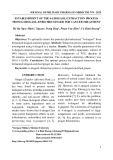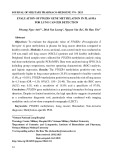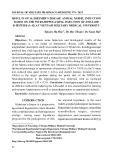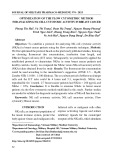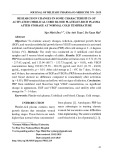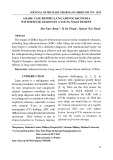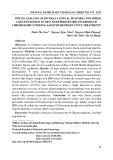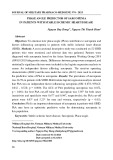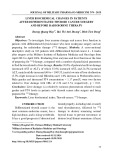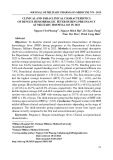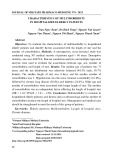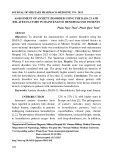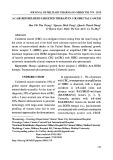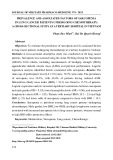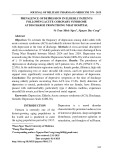
JOURNAL OF MILITARY PHARMACO-MEDICINE N04 - 2025
92
CHARACTERISTICS OF MULTIMORBIDITY
IN HOSPITALIZED ELDERLY PATIENTS
Tran Ngoc Tuan1, Do Dinh Tung2, Nguyen Van Luyen3
Nguyen Van Thuan3, Nguyen Thi Hanh3, Nguyen Thanh Xuan3*
Abstract
Objectives: To evaluate the characteristics of multimorbidity in hospitalized
elderly patients and identify factors associated with the length of stay and the
number of comorbidities. Methods: A retrospective, cross-sectional study was
conducted using 507 medical records of patients aged > 60 years. Descriptive
statistics, one-way ANOVA, Pearson correlation analysis, and multiple regression
analysis were used to evaluate the associations between age, sex, number of
comorbidities, and length of stay. Results: The median age of patients was 73
years, and the sex distribution was relatively balanced (49.3% male, 50.7%
female). The median length of stay was 9 days, and the median number of
comorbidities was 3. Hypertension was the most common comorbidity (61.9%),
followed by chronic lung disease (30.4%) and diabetes (26.4%). Older age and
number of comorbidities were associated with longer length of stay. The number
of comorbidities was an independent factor affecting the length of hospital stay
(OR = 1.63; 95%CI = 1.41 - 1.89). Conclusion: Multimorbidity is common in
hospitalized elderly patients, and factors such as advanced age and the number of
comorbidities increase the length of hospital stay. Management and medical care
should be strengthened to meet the needs of this group of patients.
Keywords: Elderly patients; Multimorbidity; Length of hospital stay;
Chronic diseases.
1Vietnam Military Medical University
2Saint Paul General Hospital
3Military Hospital 103, Vietnam Military Medical University
*Corresponding author: Nguyen Thanh Xuan (bsxuanhatay@gmail.com)
Date received: 13/11/2024
Date accepted: 05/02/2025
http://doi.org/10.56535/jmpm.v50i4.1091






